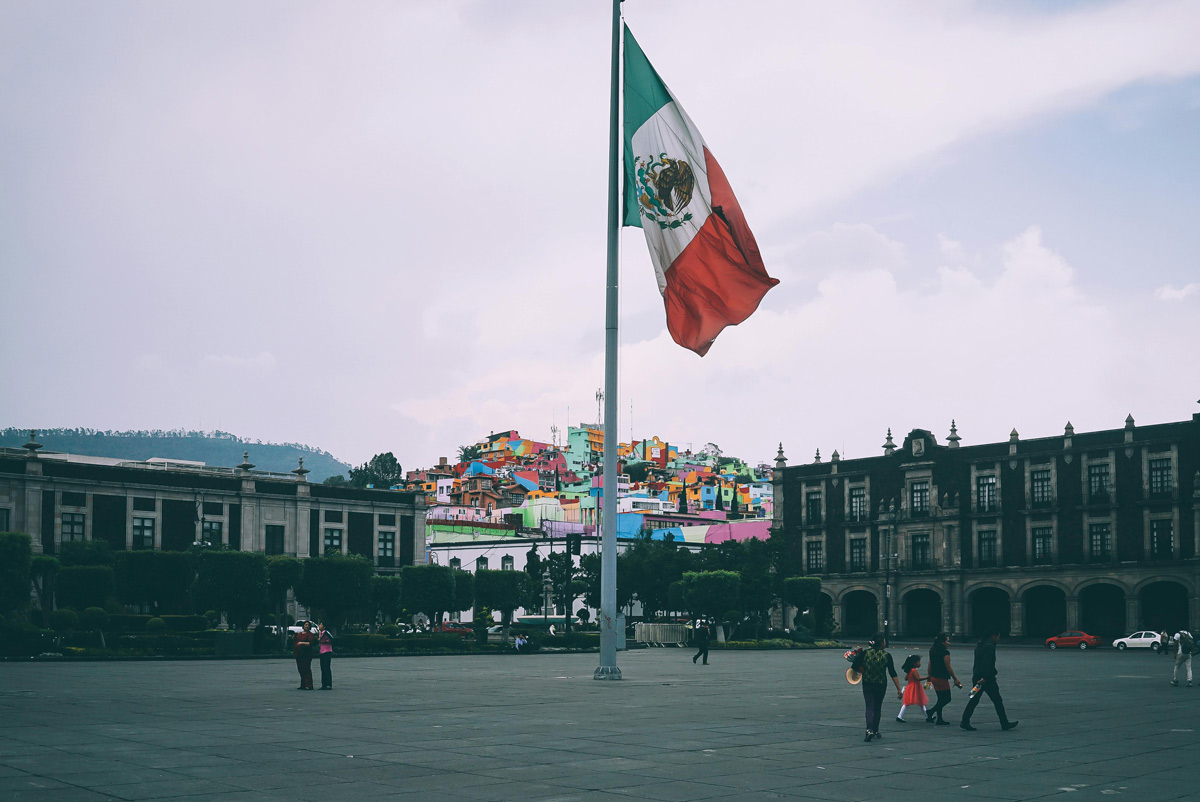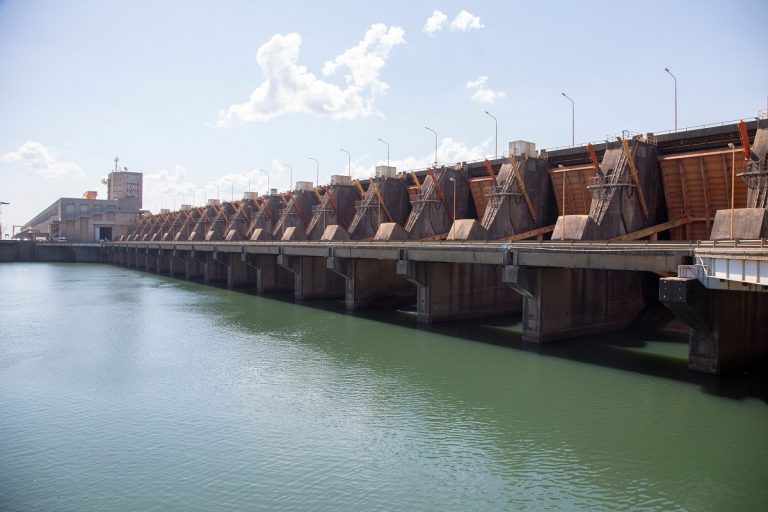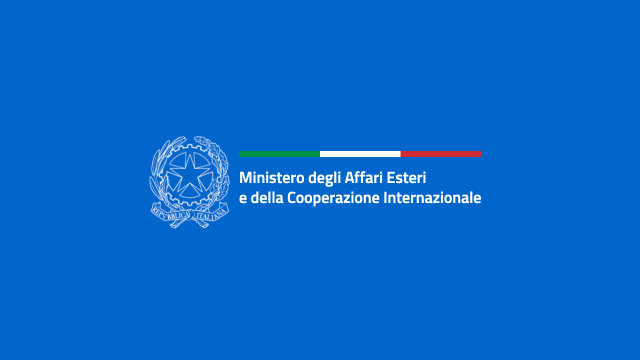Mexico today presents itself on the global stage as a nation with solid macroeconomic fundamentals and a sustained period of political stability. With the inauguration of President Claudia Sheinbaum on 1 October 2024, the country has embarked on a path of continuity with the policies of the previous administration, built around three core pillars: income redistribution, economic and financial stability, and a privileged relationship with the United States. This stability, combined with a reliable institutional framework, has enabled the Mexican economy to grow steadily in recent years, rising from 15th to 13th position in the global GDP ranking.
Although 2024 closed with more modest growth (+1.5% according to the IMF), partly due to the electoral cycle, the country’s fundamentals remain sound. Mexico benefits from a flexible exchange rate regime, fiscal responsibility legislation, and a well-regulated financial sector. It is also a leading commercial hub, with 14 active Free Trade Agreements covering 50 countries and 32 investment protection treaties, including the one in force with Italy since 1999. At the heart of this framework lies the USMCA trade agreement with the United States and Canada, which ensures preferential access to a vast common market and is due for renewal in 2026. Also of strategic importance for Italian businesses is the Modernised Global Agreement between the EU and Mexico, whose technical negotiations have been concluded and which is expected to be signed in early 2026.
Forecasts for 2025 remain cautious, influenced by uncertainty surrounding US trade policy, which may affect an economy where exports to the United States accounted for 27% of GDP in 2024. Nevertheless, Mexico’s political stability and openness to trade remain central to its economic outlook.
The Business Forum: a platform for shared growth
The Italy-Mexico Business Forum, held in Mexico City on 22 May 2025, marked the culmination of an intense phase of revitalisation of the strategic partnership. The event brought together around 500 businesses, including over 120 Italian companies, resulting in 150 B2B meetings and a fruitful dialogue between key institutions and industry associations from both countries.
The Forum highlighted how, in a time of global uncertainty, market diversification is a vital strategy for both Italy and Mexico. Discussions centred around four thematic roundtables, selected for the excellence of Italian expertise and the opportunities available in the Mexican market: automotive, machinery (Industry 4.0 and agri-food), green economy, and physical and digital infrastructure.
Mexico is a global automotive powerhouse, ranking in 2024 as the fourth-largest producer of components (USD 121.7 billion) and the fifth-largest in vehicle production (3.9 million units). The panel on this sector explored the opportunities linked to government incentives and the benefits expected from the new EU-Mexico agreement.
Strong convergence also emerged in the area of machinery, particularly agricultural mechanisation. The goal is to foster synergies to provide innovative solutions for irrigation, precision farming, and energy-efficient technologies—aligned with the food sovereignty objectives of both countries.
Energy transition is a top priority for the Sheinbaum administration, which is committed to reshaping the national energy mix through greater use of renewables. In the Forum’s green economy segment, significant interest was shown in government programmes such as the Programa Nacional Hídrico 2024–2030, which allocates EUR 9.5 billion to the water sector.
With regard to infrastructure, the “Plan Mexico” prioritises the modernisation of the national transport network through major investments in land, sea, air, and rail transport—areas in which Italian companies, renowned for their technical expertise and innovation, can play a key role.
Italy-Mexico trade within the framework of the Italian Export Action Plan
Mexico is a priority market under the Italian Government’s “Action Plan for Italian exports to high-potential non-EU markets”. Indeed, Mexico is the top destination for Italian exports in Latin America (accounting for 31.6% of the regional total) and the second across the entire American continent after the United States.
In 2024, total bilateral trade exceeded EUR 8.1 billion (+10.1% compared to 2023), with a strongly positive trade balance for Italy of EUR 5.15 billion. Italian exports reached EUR 6.6 billion, marking a 7.4% increase, and demonstrating growing appreciation for Made in Italy products.
Global Gateway: flagship projects for sustainable development
The European Global Gateway Investment Agenda (GGIA) has identified Mexico as the site of several strategic projects supporting energy transition, sustainable mobility, and the circular economy. Two flagship programmes in particular offer significant opportunities for Italian expertise.
The Interoceanic Corridor of the Isthmus of Tehuantepec: this major infrastructure project aims to connect the Atlantic and Pacific Oceans via a 1,200-kilometre logistics corridor, positioning itself as a strategic alternative to the Panama Canal. With an estimated public investment of USD 5 billion, the project seeks to attract USD 50 billion in private investment and establish industrial development hubs in key sectors (pharmaceuticals, logistics, agri-industry). Companies operating in the corridor will benefit from tax incentives, including full exemptions from income tax and VAT.
The Circular Economy Industrial Park in Tula (Hidalgo): this initiative aims to transform waste management into an opportunity for development. In a country where less than 10% of the 120,000 tonnes of daily waste is recycled, the 700-hectare Tula park will integrate facilities for the treatment of organic waste (via gasification to produce fertiliser and fuel), tyre and construction waste recycling, and composting centres. Coordinated primarily by the Mexican Ministry of the Environment (Semarnat) and the Faculty of Engineering at the National Autonomous University of Mexico (UNAM), the project represents a large-scale model of sustainable development.
“Plan Mexico”: infrastructure and development to connect the nation
“Plan Mexico”, promoted by President Sheinbaum, is a wide-ranging programme aimed at driving economic development and improving living conditions in vulnerable regions through an unprecedented expansion of infrastructure.
The National Road Infrastructure Programme 2025–2030 envisions an initial phase of expansion and maintenance of 4,000 kilometres of highways, with an investment of 173 billion pesos (approximately EUR 8.5 billion). The plan includes the construction of 18 new bridges and viaducts, targeted road programmes for strategic states such as Oaxaca and Guerrero, and mixed-investment projects for key arterial roads.
A practical element of the plan is its focus on maintenance, including the acquisition of 20 paving trains to bring resurfacing works in-house, with projected cost savings of 30%. This comprehensive approach—from major projects to routine maintenance—opens up a broad spectrum of opportunities across the construction and infrastructure supply chain.
Made in Italy already in action
- Italian Trade Agency has allocated EUR 800,000 for trade fairs, business missions, agreements with large-scale retail, and ecommerce, while actively promoting business matching through programmes such as OpportunItaly.
- CDP, SACE and SIMEST offer a comprehensive package of financial instruments: export credit, internationalisation support, a EUR 500 million concessional finance line for Latin America, and equity tools to support direct investments.
- FEDERUNACOMA plans a mission to Mexico in 2026, including a workshop dedicated to Italian agricultural technology.
- Sparkle has announced the launch of a new Point of Presence (PoP) in the Querétaro data centre cluster, enhancing connectivity and digital service offerings in the region.
Interview with the Italian Ambassador to Mexico, Alessandro Modiano
Mexico–Italy: a strategic alliance between green economy and new infrastructure
In a rapidly evolving global economy, Mexico stands out as an increasingly strategic partner for Italy, offering fertile ground for industrial investment and collaboration. In this interview, Ambassador Modiano outlines the opportunities for Italian businesses in light of key development initiatives such as Plan Mexico and the EU’s Global Gateway Investment Agenda.
1 – In your opinion, which sectors in Mexico should Italian companies focus on, considering Government programmes and local legislation? Are there sectors where you see strong demand for Made in Italy? Are any projects of interest currently under way or in preparation?
The EU Delegation in Mexico, in agreement with local government authorities, has identified six priority sectors for action under the GGIA (Global Gateway Investment Agenda), launched by the European Commission in late 2021 to promote public-private European investments. These are: the energy transition and circular economy (including sargassum transformation and integrated water resource management); sustainable mobility (such as electric buses and rail networks); health resilience (including vaccine production); sustainable agriculture (protecting forests and biodiversity); and sustainable finance (green bonds). Additionally, “Plan Mexico”, recently launched by President Sheinbaum to position the country among the world’s top ten economies by 2030, features several tools—foremost among them attracting Foreign Direct Investment (FDI) through tax incentives for both domestic and foreign investments, with a particular focus on high-tech and research and development sectors.
Moreover, the deployment of so-called “Polos para el desarrollo económico y el bienestar” has begun across the country. These fifteen territorial hubs, identified for their development potential, aim to attract national and international investments in goods, services, facilities, and infrastructure, thanks also to a range of economic and fiscal incentives. Accelerating public works and creating at least 800,000 new direct jobs by 2025 are additional key goals of Plan Mexico. To achieve these, the Mexican Government hopes to rely on increased foreign investment.
Within the Global Gateway initiatives in Mexico, particular mention must be made of President Sheinbaum’s flagship project: the Interoceanic Corridor of the Isthmus of Tehuantepec in southern Mexico. Through a multimodal platform comprising four ports and over 1,200 kilometres of railways, roads and airports, the corridor will connect the Atlantic and Pacific Oceans, offering an alternative commercial route to the Panama Canal. The system will be complemented by ten industrial clusters in strategic sectors such as pharmaceuticals, biotech, agri-industry, and logistics. Companies operating within the Isthmus Corridor will benefit from fiscal advantages, including exemption from both income tax and VAT.
Among Mexico’s priority projects is another GGIA flagship initiative: the creation of an industrial park at the former Tula refinery in the State of Hidalgo. This site will host a centre for developing the circular economy in its broadest sense, with facilities for plastic recycling, waste gasification and fertiliser production, as well as reuse of construction materials.
Finally, I would highlight the Mexican Ministry of Environment’s plan to build a new sargassum recycling plant in the State of Quintana Roo. This macro-algae infests the country’s coastlines but also represents a valuable organic residue with strong potential as biomass and fertiliser. The project has a dual aim: mitigating damage to the local tourism industry and exploiting the algae for bioenergy purposes.
All of this points to the significant investment opportunities Mexico will offer in the coming years in the circular economy sector. In this context, the leadership of Italian industry—among the global frontrunners in circularity—combined with our industrial know-how in sectors such as e-mobility, circular economy, and hydrogen production and use, could act as a catalyst for the development of Italian investments, collaborations, and partnerships with local counterparts. It is worth noting that Italy is already active in Mexico in this sector through the annual Ecomondo Mexico fair, organised jointly by the Italian Exhibition Group and the German group Deutsche Messe.
2 – Beyond the themes of the round tables at the recent Business Forum (automotive, machinery, green economy, infrastructure), are there other sectors to watch with interest in Mexico?
The leading sector for Italian exports to Mexico is industrial machinery (over 35% of the total). This involves a technology transfer that has contributed to the strong industrial growth seen in Mexico in recent years—a trend the country continues to prioritise. Also of interest is the performance of certain categories of consumer goods, which hold substantial expansion potential due to the socio-economic development of the population and the growth of the middle class. In particular, I would mention the agri-food and cosmetics sectors, which saw significant growth in the past year, even if their shares of total exports to Mexico remain modest. In 2024, for example, imports of Italian extra virgin olive oil (0.3% of total imports from Italy) grew by 67% over the previous year, while imports of cosmetics from Italy (1.8% of the total) rose by 27%.
3 – Regarding the Business Forum held on 22 May, how do you assess the response from Italian and Mexican companies? Have the 150 B2B meetings already produced any results? Have you seen increased Italian interest in Mexico?
It is still too early to evaluate the results of the Italy–Mexico Business Forum of 22 May, particularly given the global economic uncertainty triggered by protectionist policies and US tariffs—especially relevant in a country like Mexico, which is the USA’s leading trading partner and where many foreign firms invest to export to the United States. Nonetheless, the participation of more than one hundred Italian companies at the event clearly demonstrates Italy’s strong interest in Mexico. The signing on 30 June of a contract by the Italian company NEXTCHEM (part of the Maire Group) with a consortium of multinational firms for the launch of the “Pacífico Mexinol” project—aimed at producing green methanol in Mexico—is further proof of the potential in green economy and sustainable infrastructure sectors (including energy infrastructure), which were among the core themes of the Forum. Although NEXTCHEM did not attend the Forum—since the investment project was not yet finalised—its involvement and the presence of Italian technology in a project critical to Mexico’s energy transition (with over USD 3 billion in investment from the consortium) confirms the foresight of hosting the Business Forum in Mexico.
4 – Can you provide an overview of the current Italian presence in Mexico, especially regarding businesses?
Economic and trade relations between Italy and Mexico are growing ever stronger, and the Italian entrepreneurial presence in the country is broad and diverse. Approximately 2,300 Italian businesses—small, medium, and large—are active in Mexico, of which around two hundred have established production facilities. In 2023, total Italian FDI stock in Mexico amounted to around EUR 4.7 billion. According to data from Mexico’s Ministry of Economy, the investment by Ternium (part of the Italo-Argentinian Techint Group) of approximately EUR 3 billion for the construction of a steel plant and other new facilities in the State of Nuevo Leon could bring total Italian investment in Mexico in 2024 to EUR 7.7 billion.
Among the key Italian industrial groups operating in Mexico are:
Energy: ENI (Mexico’s leading private oil operator), ENEL (the leading company in renewable energy); Automotive: Stellantis (with seven production plants), Pirelli (with a state-of-the-art high-end tyre production plant mainly serving the US market), Brembo and Eurotranciatura, along with dozens of SMEs active in the supply chain; Oil & Gas: MICOPERI, involved in maintenance of Pemex platforms; Infrastructure: Techint Group, Sparkle, SICIM, Bonatti, Isopan-Manni Group-Marcegaglia, Prysmian and potentially Fincantieri; Steel: Danieli Group; Construction: Buzzi Unicem; Food: Ferrero (with a production plant and distribution centres) and Barilla; Pharmaceuticals: Stevanato Group, Alfasigma, Chiesi, Menarini Biotech; Optics: Luxottica and Defence and Security: Leonardo.
5 – How will the OpportunItaly campaign be implemented in Mexico? What about the Buyers Club?
In Mexico, the OpportunItaly campaign was launched at the most recent Business Forum in Mexico City. A dedicated stand was set up to present this new communication initiative to local operators and Italian companies in attendance, as well as the exclusive OpportunityBuyersClub membership programme, designed for buyers, importers, distributors and other key foreign operators looking to connect with Italian businesses and discover Made in Italy excellence.
In Mexico, the sectors selected for the OpportunItaly campaign are Mechanics & Automation and Sustainable Infrastructure & Energy—two of the most dynamic industrial segments and rich in opportunity for foreign suppliers. In these sectors, Italy boasts a strong competitive position, thanks to high technical expertise, proven experience, innovation capabilities, and qualities such as flexibility and reliability—attributes widely recognised and appreciated by Mexican stakeholders.
Further opportunities to promote OpportunItaly in Mexico will be provided by various trade promotion activities organised by the Italian Trade Agency (ITA) in line with the focus sectors of the project, particularly trade fairs where ITA participates with Italian company collectives. These events will serve as platforms to showcase the initiative and highlight the benefits of the OpportunityBuyersClub to visiting professionals at the Italian pavilion.

Italian expertise setting the standard in Mexico
Following the 2013 energy reform that opened Mexico’s hydrocarbon exploration and production sector to foreign operators, Eni was awarded the contract for the development of Area 1 in September 2015. This marked the return of a major international oil company to Mexico’s upstream sector for the first time since its nationalisation in 1938.
Between 2017 and 2019, alongside the development of Area 1, Eni progressively strengthened its position in Mexico by acquiring a further six offshore exploration blocks in the Gulf of Mexico. Over the years, the exploration campaign has led to six discoveries across four blocks, amounting to a total of 1.3 billion barrels of oil equivalent in discovered volumes.
In June 2019, with the start of production from Area 1, Eni became the first foreign operator to produce hydrocarbons in Mexico. In 2022, following the commissioning of the FPSO Miamte, Eni also became the first foreign operator to export crude oil from the country. To date, the Area 1 project has completed the installation of all four platforms outlined in the development plan and is progressing with increased production through the drilling of new wells. With a production of over 75,000 barrels of oil equivalent per day, Eni Mexico is now the leading foreign operator in the country’s upstream sector.
Beyond its business operations and in close collaboration with local institutions, Eni Mexico has launched a number of initiatives to support coastal communities in the state of Tabasco, close to the Area 1 activities. These initiatives span various areas, including: education, through the renovation of 13 schools benefiting 2,000 students and the training of 1,100 teachers and parents; youth empowerment and social integration, with programmes for 1,500 young people aged 15 to 24; economic development and diversification, with projects promoting sustainable fishing and oyster farming; community health, with a nutrition programme for 1,500 children aged between 3 and 12, and the construction of a health centre in a remote community.
Of particular note, in the area of youth talent development, Eni has enabled 37 young Mexicans to obtain a highly specialised Master’s degree in Italy.
In addition, in collaboration with UNESCO, Eni has launched joint initiatives to support the sustainable development of the local economy, protect natural and cultural heritage, and promote human rights and inclusion.
Since 2021, Eni has been engaged—together with international developers Terra Global and First Climate—in the implementation of the Amigos de Calakmul forest conservation project. Developed under the United Nations’ REDD+ framework (Reducing Emissions from Deforestation and forest Degradation), the project spans over 200,000 hectares in the state of Campeche.
Through investment and operational expenditure linked to its activities, Eni has invested over USD 5.5 billion in Mexico, generating approximately USD 1.5 billion in revenue for the Mexican Government.
Eni is a high-tech global energy company active in over 60 countries, operating across the entire energy value chain: from hydrocarbon exploration and production, to electricity generation, traditional and bio-refining, and chemicals, to the development of renewables, circular economy processes, and the supply of alternative energy carriers.
Eni’s strategy is aimed at achieving Net Zero by 2050 and delivering a socially fair and just energy transition. The company is committed to offering an increasingly decarbonised portfolio of services, products, and solutions, and has embedded the United Nations’ 17 Sustainable Development Goals (SDGs) into its mission, sharing growth and development with the countries in which it operates.
Aware that there is no single answer to the energy trilemma, Eni has adopted a flexible and adaptive strategy based on the diversification of geographical areas and energy sources, combined with the development and implementation of new technologies, with a view to achieving climate neutrality.





